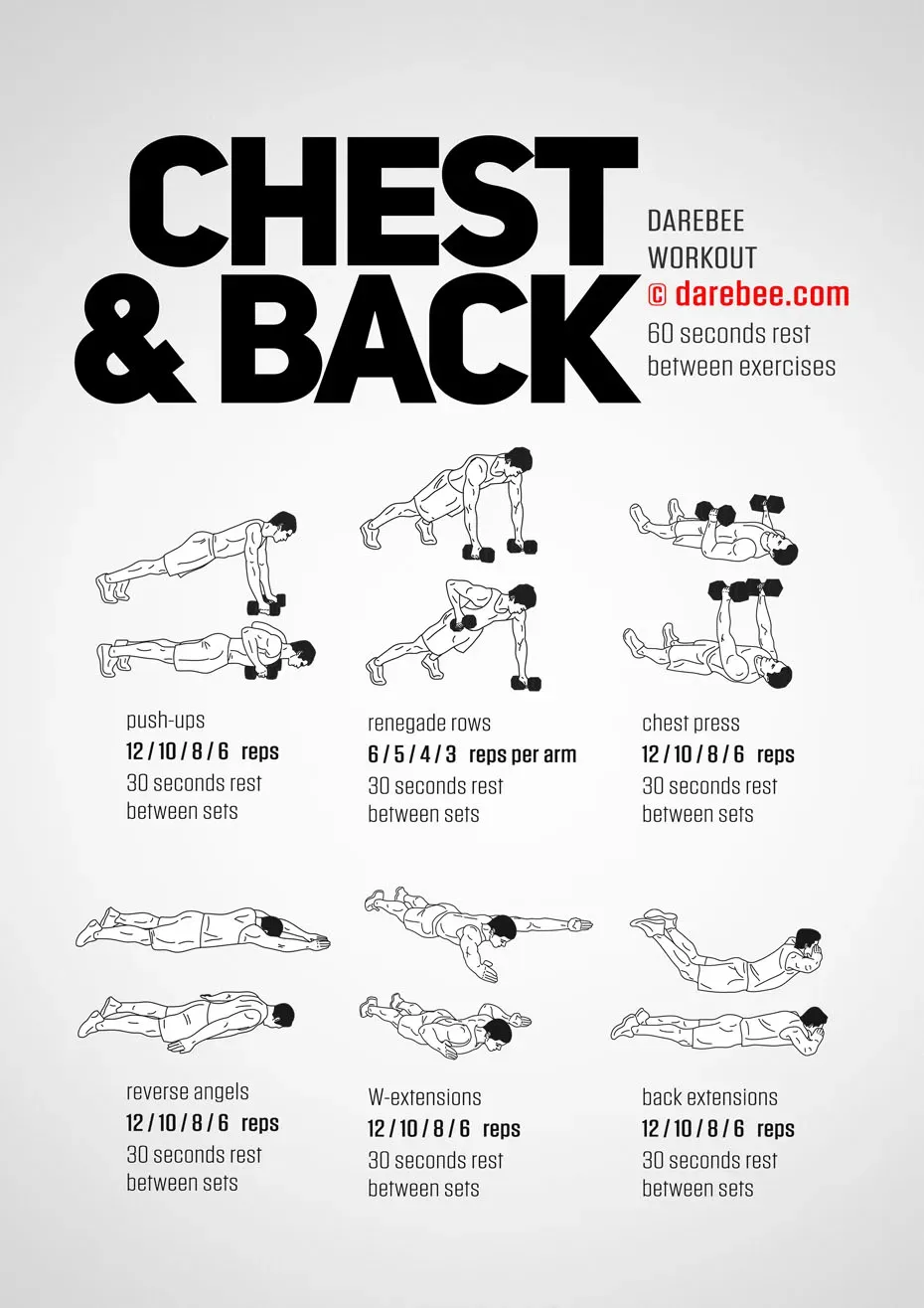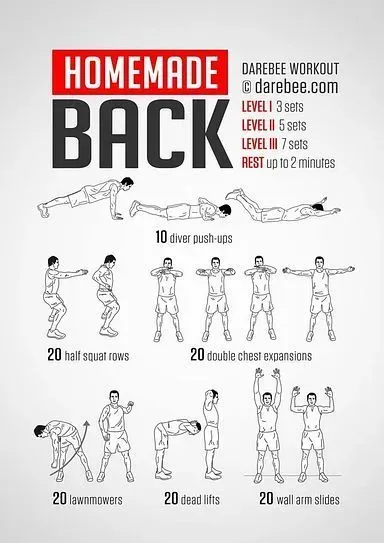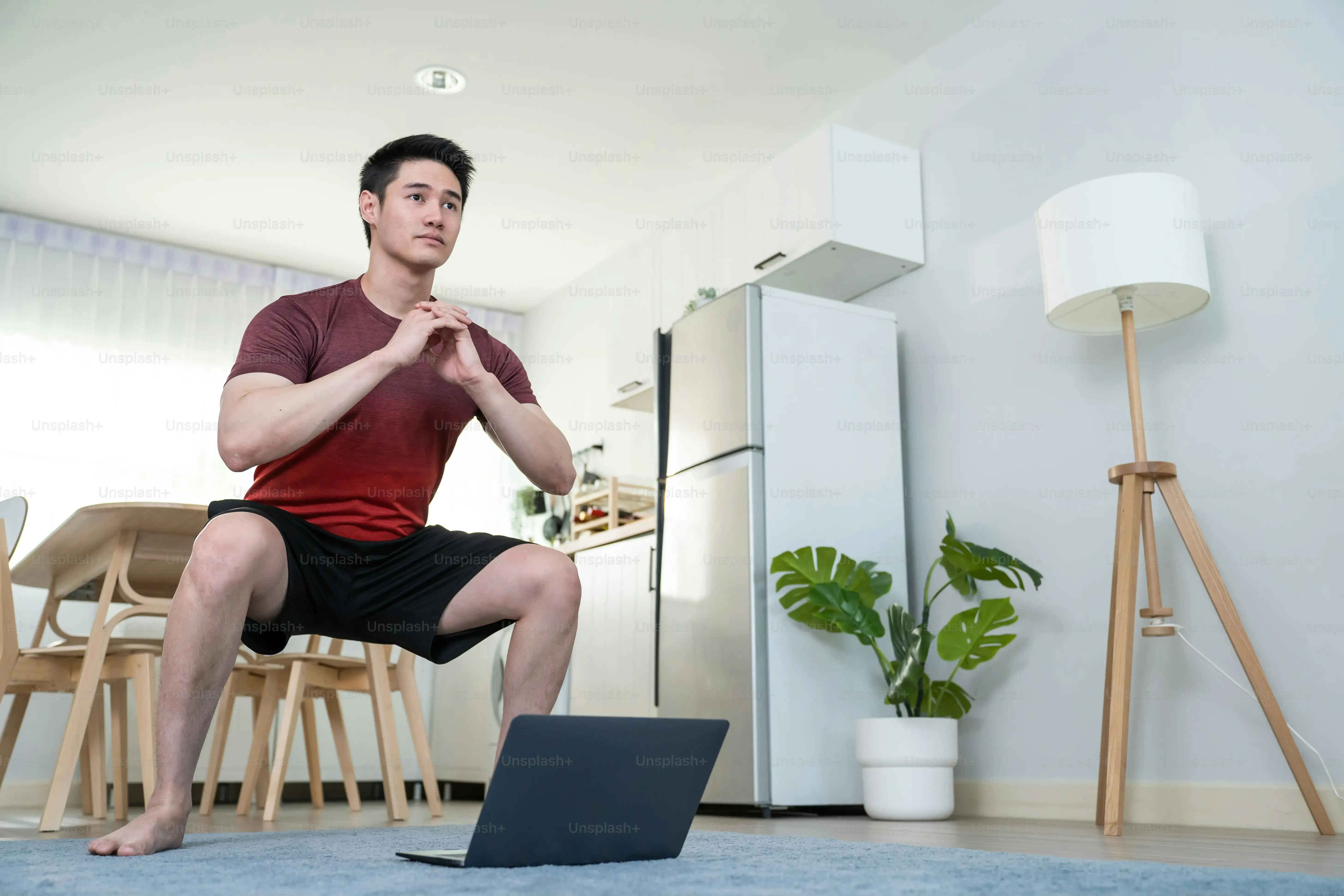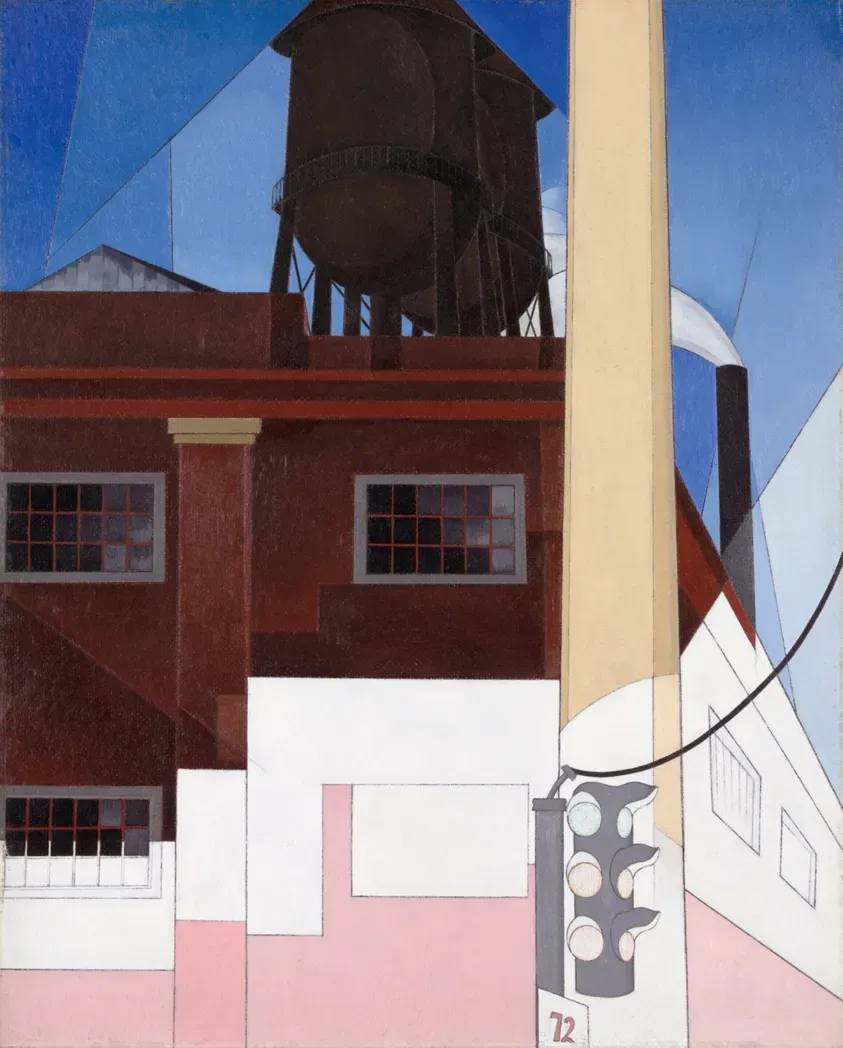Table of Contents
Staring at the ceiling, wishing you had access to a gym to finally build that stronger chest and back? Maybe the weights section feels intimidating, or perhaps life just keeps you away from the fitness center. You're not alone. Plenty of people want to improve their upper body strength and posture but think they need fancy machines or stacks of plates.
Why Bother with a Chest and Back Workout at Home Without Equipment?

Why Bother with a Chest and Back Workout at Home Without Equipment?
Gym Membership Not Required, Results Still Delivered
Let's be honest. Signing up for a gym, commuting there, and navigating crowded equipment racks can feel like a second job. It's a major barrier for many people trying to get stronger. But ditching the gym doesn't mean you ditch the gains, especially when it comes to your chest and back. Achest and back workout at home without equipmentoffers unparalleled convenience. You can literally roll out of bed, pump out a few sets, and be done before your coffee finishes brewing. No waiting for machines, no judging eyes, just pure, focused work.
Bodyweight is Your Best Friend (Seriously)
Think bodyweight is just for beginners? Think again. Your own body provides plenty of resistance to build serious muscle and strength in your chest and back. Push-ups, inverted rows under a sturdy table, various planks – these aren't just warm-ups. They are foundational movements that challenge your muscles deeply, improve stability, and build functional strength you actually use in daily life. You're not just lifting a weight; you're controlling your entire body through space, which is a different, often more challenging, kind of work.
Here’s why going equipment-free makes sense:
- Saves money (no gym fees, no equipment costs).
- Saves time (no travel).
- Offers privacy and comfort.
- Builds functional strength and body control.
- Allows for constant progression through variations.
Pushing Your Limits: Effective Bodyweight Chest Exercises You Need

Pushing Your Limits: Effective Bodyweight Chest Exercises You Need
Forget the Bench Press, Master the Push-Up
When you think chest workout, your mind probably jumps to the bench press. But honestly, the humble push-up is king when you're working with just your body. It hits your chest, shoulders, and triceps all at once, demanding core stability too. Start with your hands slightly wider than shoulder-width, fingers pointing forward. Lower your chest towards the floor, keeping your body straight like a plank. Push back up powerfully. Sounds simple, right? It is, but doing them correctly and consistently is where the magic happens. Don't let your hips sag or pike up. Control the movement down and explode up. It’s a fundamental movement for a reason – it works.
Progression is Key: More Than Just Reps
Once regular push-ups start feeling too easy – and they will if you stick with it – don't just do endless reps. That gets boring and your progress will stall. The beauty of bodyweight is the endless variations. Elevate your feet on a chair for decline push-ups to hit the lower chest harder. Bring your hands closer together for diamond push-ups to torch your triceps and inner chest. Try incline push-ups against a wall or sturdy counter if you're not quite ready for the floor yet. You can even slow down the tempo, pausing at the bottom to increase time under tension. There’s always a way to make it tougher without adding a single plate.
Here are a few chest push-up variations to try:
- Standard Push-ups (Hands shoulder-width apart)
- Wide Push-ups (Hands wider than shoulder-width)
- Narrow/Diamond Push-ups (Hands close together, forming a diamond shape with thumbs and index fingers)
- Incline Push-ups (Hands on an elevated surface like a counter or chair)
- Decline Push-ups (Feet on an elevated surface like a chair or bench)
- Pike Push-ups (Hips raised, body forms an inverted V, targets upper chest/shoulders)
Pulling Power: Essential Back Moves You Can Do Anywhere
The Backyard Battle: Attacking Your Back Without a Bar
Alright, let's get real. Training your back effectively at home without equipment is trickier than chest. Push-ups are everywhere, but replicating pulling movements without a pull-up bar or resistance bands? That's the real puzzle. Most people skip back work entirely in their home routines, leading to that classic hunched-over look from all the pushing. Neglecting your back is a fast track to poor posture and potential shoulder issues. You need to balance out all those push-ups. The good news? It's not impossible. It just requires a bit of creativity and finding something sturdy to hang onto.
The Humble Table Row: Your Back's Best Friend
Enter the inverted row, often called the table row or even the broomstick row if you can rig something up between two chairs. This exercise is the cornerstone of bodyweight back training at home. Find a sturdy table – the dining table, a strong desk, anything that won't collapse under your weight. Lie on your back underneath it. Reach up and grab the edge of the table with an overhand grip, hands slightly wider than shoulder-width. Your body should be straight from head to heels. Pull your chest up towards the table edge, squeezing your shoulder blades together at the top. Lower yourself back down with control. It feels like a horizontal pull-up, and it absolutely hammers your lats, rhomboids, and traps.
To make your table rows count:
- Keep your body rigid, like a plank. Don't let your hips sag.
- Focus on pulling with your back muscles, not just your arms.
- Control the descent; don't just drop down.
- Adjust the difficulty by walking your feet further under the table (easier) or further away (harder).
- Try different grips (underhand for more biceps, neutral if your table allows).
Beyond the Row: Adding Variety to Your Back Attack
While inverted rows are foundational, they aren't the only trick up your sleeve for achest and back workout at home without equipment. If a suitable table is hard to find, you can work on floor-based exercises that target the back stabilizers. Think Superman holds, where you lie face down and lift your arms and legs off the floor, squeezing your lower back and glutes. You can also simulate rowing motions while lying on your stomach, focusing on squeezing your shoulder blades. These might not build massive lats like weighted rows, but they improve muscle activation and endurance, crucial for overall back health and posture. Combine these with your rows for a more complete stimulus.
Crafting Your Ultimate Chest and Back Workout at Home Without Equipment

Crafting Your Ultimate Chest and Back Workout at Home Without Equipment
Putting the Pieces Together for Your Home Workout
so you've got your push-ups dialed in and you've found a table sturdy enough for rows. Now what? You don't just do all your push exercises then all your pull exercises. That's like eating all your vegetables then all your dessert. A smartchest and back workout at home without equipmentpairs these opposing movements. Think of it like balancing out the force. You push, you pull. This approach, often called supersetting or circuit training, is incredibly efficient. You work one muscle group while the opposing one rests briefly, keeping your heart rate up and getting more work done in less time. It also helps maintain muscular balance around your joints, which is a big deal for preventing aches and pains down the road.
Consistency and Smart Progression are Your Allies
How often should you hit this home workout? For most people starting out, hitting your chest and back two or three times a week with a rest day in between is a solid plan. Your muscles need time to recover and grow stronger. Don't fall into the trap of thinking more is always better; that's a fast track to burnout or injury. And remember that progression isn't just about adding weight (since you don't have any). Once you can comfortably do, say, 15-20 reps of a push-up variation, it's time to switch to a harder variation or slow down the movement. Add pauses at the bottom of your push-ups, or hold the top position of your rows for a second squeeze. These small tweaks make a huge difference in challenging your muscles in new ways.
Here's a simple structure you could follow:
Exercise Pair (Superset) | Sets | Reps/Duration |
|---|---|---|
Standard Push-ups / Inverted Rows | 3-4 | Max reps with good form / Max reps with good form |
Diamond Push-ups / Superman Holds | 3 | Max reps with good form / 30-60 second hold |
Incline Push-ups / Simulated Floor Rows | 3 | Max reps with good form / Max reps with good form focusing on squeeze |
Taking Your Chest and Back Workout at Home Without Equipment to the Next Level

Taking Your Chest and Back Workout at Home Without Equipment to the Next Level
Mastering Time Under Tension and Range of Motion
So you've conquered the basic push-ups and table rows. Doing 20 reps feels like a warm-up now. Don't just pile on more reps; that's the lazy way out. To truly take yourchest and back workout at home without equipmentto the next level, you need to manipulate the exercise itself. Slow down. Seriously. Lower yourself during a push-up over three or four seconds. Pause at the bottom, chest hovering an inch from the floor, for a count of two. Then explode up. For rows, hold that top squeeze for a solid second or two, really focusing on contracting your back muscles. This drastically increases time under tension, forcing your muscles to work harder and stimulating more growth than simply rushing through reps. Also, ensure you're using a full range of motion – chest to the floor on push-ups, chest to the table on rows. Half reps get you half results.
Adding Resistance Without Barbells: Get Creative
you literally have no equipment. But do you have a backpack? A heavy book? A jug of water? You can strategically add resistance. Load up a backpack and wear it during push-ups. Loop a towel around your feet during floor rows or inverted rows (if possible) and pull against the resistance. It's not a perfect substitute for weights, but it's certainly better than nothing and adds a new challenge once bodyweight alone isn't enough. Another trick is isometric holds. Instead of moving through the exercise, hold the hardest part. Hold the bottom of a push-up or the top of a row. Your muscles will scream, trust me. This builds incredible static strength and endurance, crucial for overall resilience.
Ways to make bodyweight harder:
- Slow down the eccentric (lowering) phase.
- Add pauses at the bottom or top of the movement.
- Use isometric holds at challenging points.
- Increase the range of motion.
- Elevate feet for push-ups, or lower the anchor point for rows.
- Wear a weighted backpack during exercises.
- Incorporate single-arm or single-leg variations (advanced).
Integrating Mobility and Prehab for Longevity
Pushing and pulling without equipment is great, but neglecting mobility and prehab is a recipe for future aches. A comprehensivechest and back workout at home without equipmentisn't just about the sets and reps; it's also about keeping your shoulders healthy and your posture upright. Spend time working on shoulder mobility – arm circles, shoulder dislocations with a towel or broomstick, thoracic spine rotations. These movements counteract the tightness that can build up from all the pressing and pulling and from daily life spent hunched over screens. Ignoring this is like building a fancy house on a shaky foundation. You might look strong, but you're setting yourself up for problems down the line. A few minutes of targeted mobility work before or after your workout makes a world of difference in how your shoulders feel and function.
Your Body, Your Gym: Final Thoughts on At-Home Training
So there you have it. Building a strong chest and back doesn't require a gym membership or expensive gear. By mastering fundamental bodyweight movements and structuring them intelligently, you can challenge these key muscle groups effectively. Consistency and proper form are your real allies here, not barbells or pull-up machines. Start with the basics, progress as you get stronger, and remember that the most effective gym is often the one you carry with you. Now, stop reading and start pushing and pulling.
